Castello di Potentino – a place where man, nature and artful intelligence meet and create
History
Castello di Potentino is an ancient castle built on an Etruscan site. It lies in a secret valley in one of the last undiscovered corners of Tuscany – Monte Amiata. The medieval building is surrounded by unspoilt countryside, dotted with the vines and the ancient olive trees used for the estate’s small production of high quality wine, grappa and oil.
Bought and restored in 2000 by the Greene family, today the castle is operating as a dynamic cultural centre. Ideal as an off-season travel venue, it hosts guests, events and weddings all year round.
Agriculture and viticulture are about growing and living, so eating and drinking well are an important element in the Potentino ethos which is concerned with the sustainability of how we inhabit a place and relate to it physically and mentally.
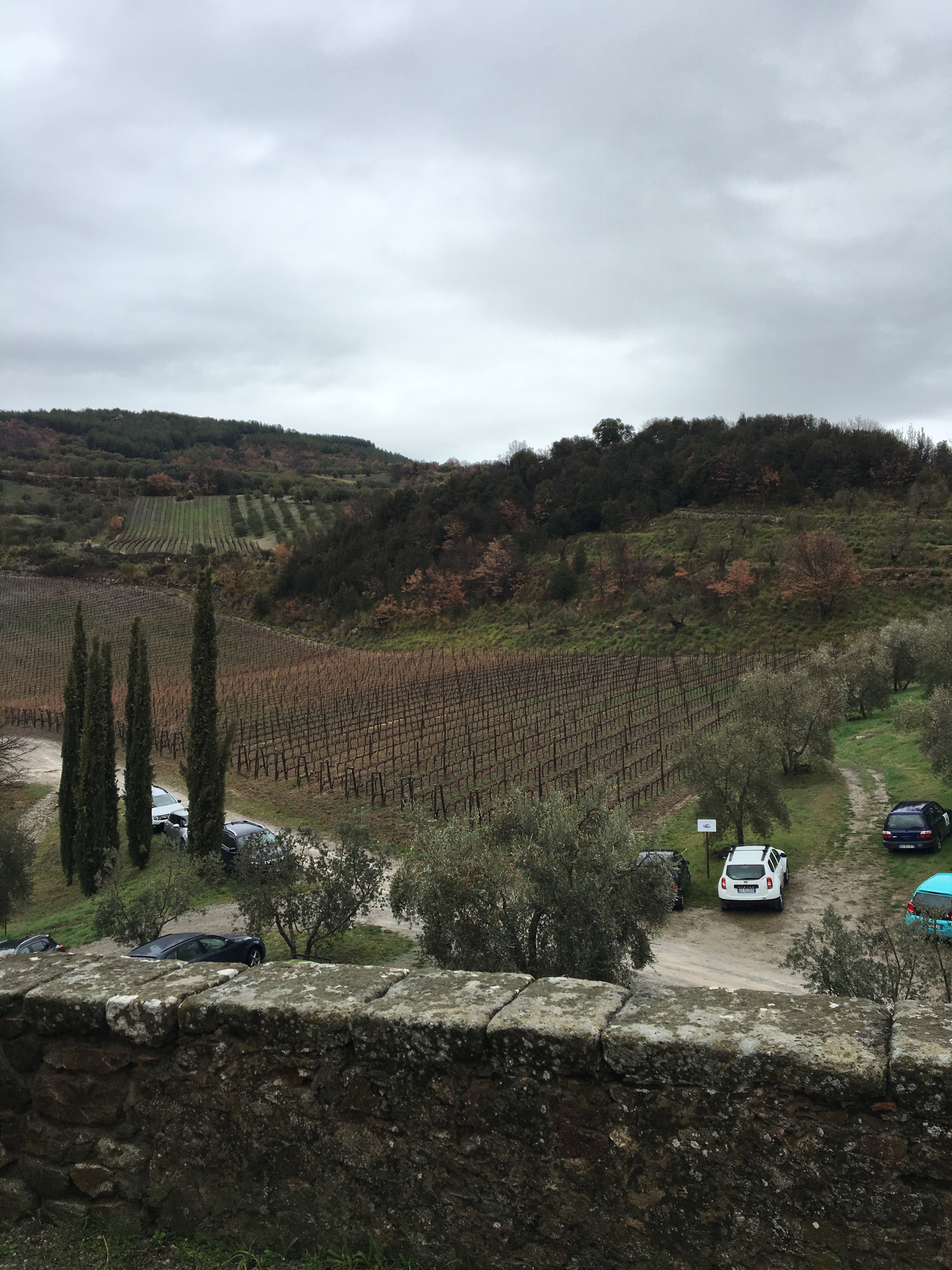
The first document to mention the Castello di Potentino is dated 1042. It then belonged to a certain Count Pietrone or Pepone. However, the original foundations are probably Etruscan. Over the centuries the property passed through the hands of many well-known Tuscan families of noble descent – the Tolomei, the Bonsignori, and the the Salimbeni, whom in the company of Contessa Bianchina, received Saint Catherine of Siena as a guest at the castle. At the end of the 16th Century it became a centre for the charitable works of the hospital order of Santa Maria della Scala.
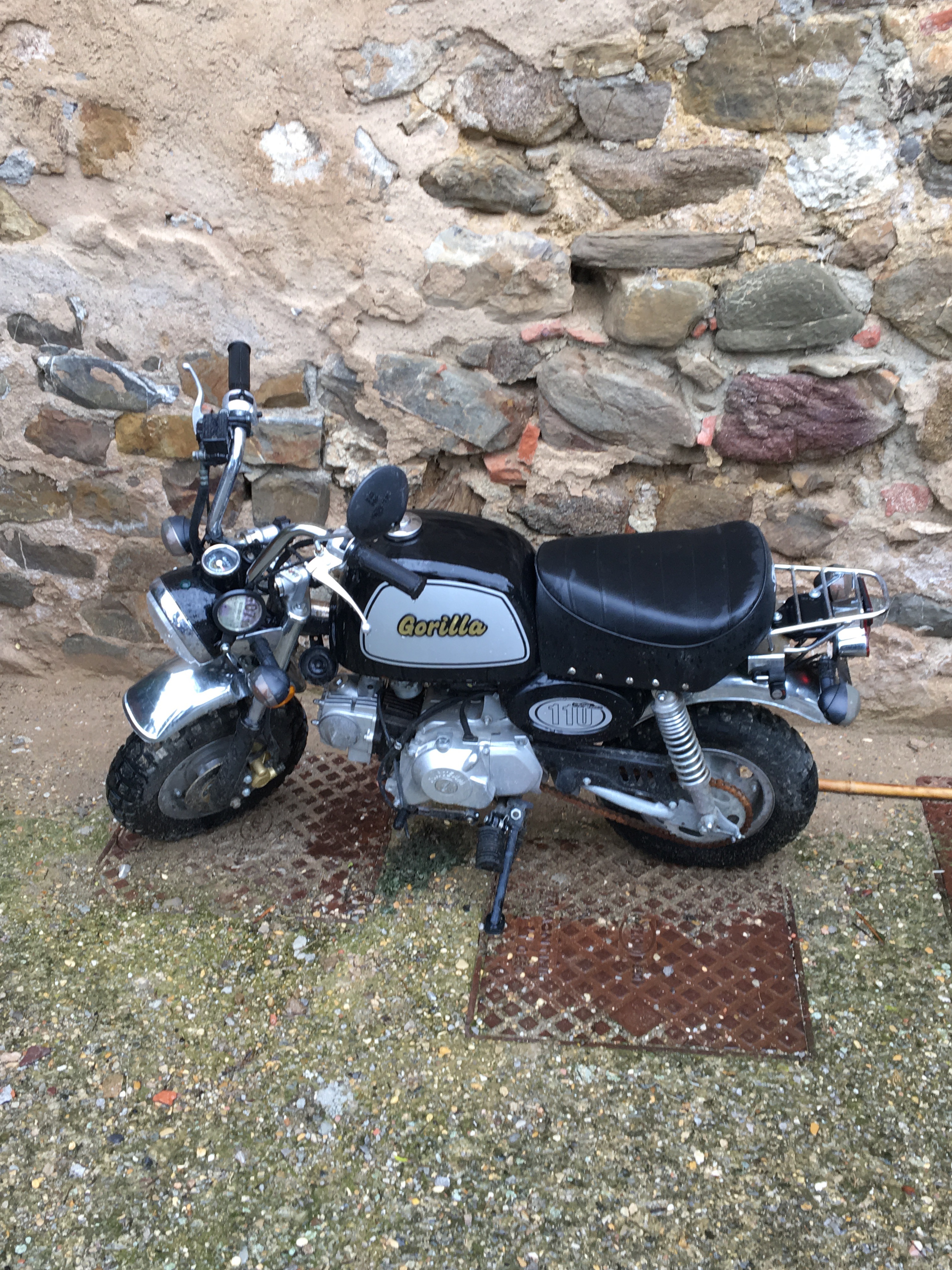
After this period of religious activity, the Medici Duke Ferdinando I conceded the estate to Marchese Giovan Battista Bourbon del Monte, famous commander-in-chief of the infantry of the Venetian Republic. His descendants finally sold the castle to a gentleman from Switzerland, Antonio Hemmeler, in 1906. Recently it was purchased and restored by the Greene family, who have given new life to the ancient traditions of the building.
The Greenes have owned properties in the Tuscan Maremma for over 30 years. Starting with a farmhouse near the coast, they gradually moved inland. Castello di Potentino is their second major project in the Grosseto area.
In 1989 the family purchased their first ruined castle – the Castello di Montepo, Scansano. Restoration was completed, vineyards planted and a winery established. After 10 years it was sold to a well-known wine producer from the Biondi Santi family.The next castle, Potentino, was discovered in an old guide book. Abandoned, dilapidated, overgrown, the potential was still apparent. It was for sale but had to be bought from 22 different people. Negotiations took a year and agreement finally reached with all the owners. In 2000, work commenced.
The Restoration
Recycling and using natural materials that are local and tradition – terracotta, peperino (a local volcanic stone), chestnut wood, earth pigments and oxides for colour and whitewash for its irregular deep textures.
Old beams were cut and used to face newly constructed doors. Coach bolts instead of modern screws. Rusty hinges, not shiny brass or chrome. Cobwebs and crumbly paint untouched so age-old patinas retained. And above all, the dirty rag to rub away any hint of the new.

Services:
Breakfast – They offer a self service breakfast in the old caste canteen.
Lunch & Dinner – If you would like to join the family of Potentino for meals, you should to let them know a day beforehand. Aldo they organize more elaborate meals on request with local chefs, or they can arrange visits with other local estates.
Activities:
All the guest can partecipate in daily activities:
Wine tasting
Castle Tour
Course of cheese making, pasta and risotto classes, Tuscan butchery, winemaking, perfumery, chocolate workshops, wood-fired baking and more.
Concert and music
Yoga classes and massages can be arranged upon request
Walking and Hiking around the Castle and the Amiata Valley
Horsebak riding
Quad tours
Bycicle rentals
Potentino Wine Club
The Potentino Wine Club is for all Potentino fans who would like to get wines delivered to their homes all over the world on a regular basis.
Members of the Potentino Wine Club will also receive special offers, gems from the castle’s cellars and discounts on orders too.
Wines
The vineyard at the Castello di Potentino is situated on the slopes of the highest peak in Tuscany, Monte Amiata, an extinct volcano. The valley is low, and sheltered. This means that in the summer they have hot days but cold nights as the air comes down from the mountain. The earth is volcanic, geologically very new and mineral rich. This minerality creates a notably sapid and fine wine, with subtle bouquets and a rich but not heavy body.
Sacromonte I.G.T. TOSCANA
Grape Variety: Sangiovese
Fermentation: In 50 Hl barrels of French Oak for approximately 14 days
Maturation: In 50 Hl barrels of French Oak for at least 24 months
Refinement: In bottle for at least 9 months before being placed on the market
Organoleptic Characteristics
Colour: Deep ruby red (central spectrum)
Nose: Delicately floral, lightly spiced, elegant and ethereal in a complex and fine bouquet
Palate: Dry, medium bodied, with well-balanced acidity. Harmonious, elegant, without evidence of harsh tannins. A very pleasant aftertaste.
Serve at: 18-20 degrees Celsius
Best accompanied by: Pasta with meat sauces; delicate red meats (veal, pork etc.); marinated and grilled white meats and wild fowl
Sacromonte or “Sacred Mountain” refers to Monte Amiata which was the home of the gods for the Etruscans and the wine is named in honour of the volcanic peperino stone typical to the mountain and used in the construction of the Castle itself.
Lyncurio I.G.T. TOSCANA Pinot Nero
Grape Variety: Pinot Noir
Fermentation: In stainless steel vats 20hl. with temperature control
Maturation: 5 months in stainless steel 20hl
Refinement: In bottle for a minimum of 1 month before being placed on the market
Organoleptic Characteristics
Colour: pale winter sunset soft pink
Nose: elegant fruit and fragrance, ample, persistent and fresh
Palate: dry, well rounded, neatly balanced with notes of summer fruit and nutty kernels
Serve at: 10-12 degrees Celsius
Best accompanied by: raw fish, sushi, oysters, fish soups and delicate white meat dishes, summer puddings and aged Parmesan.
LYNCURIO is the lynx-stone, a mythological curative stone, the colour of pale amber strongly associated with the god of wine, Bacchus.
Balaxus I.G.T. TOSCANA Rosso
Grape Variety: Grenache (Alicante)
Fermentation: In 50 Hl barrels of French Oak for 18 days
Maturation: In 50 Hl barrels of French Oak for at least 24 months
Refinement: In bottle for a minimum of 9 months before being placed on the market
Organoleptic Characteristics: Balaxus is a wine made from Alicante, also known as Grenache; characteristics of pomegranate garnet and fresh mountain cherries in its color, aromas and flavors. The texture is detailed and bright, reflecting the volcanic quartz soil and cool, crisp evenings. Balaxus is the name of an oriental ruby highly prized by the ancients.
Nose: Delicately floral, lightly spiced, elegant and ethereal in a complex and fine bouquet
Palate: Dry, medium bodied, with well-balanced acidity. Harmonious, elegant, without evidence of harsh tannins. A very pleasant aftertaste.
Serve at: 18 degrees Celsius
BALAXUS is the name of a deep red oriental ruby highly prized by the ancients.
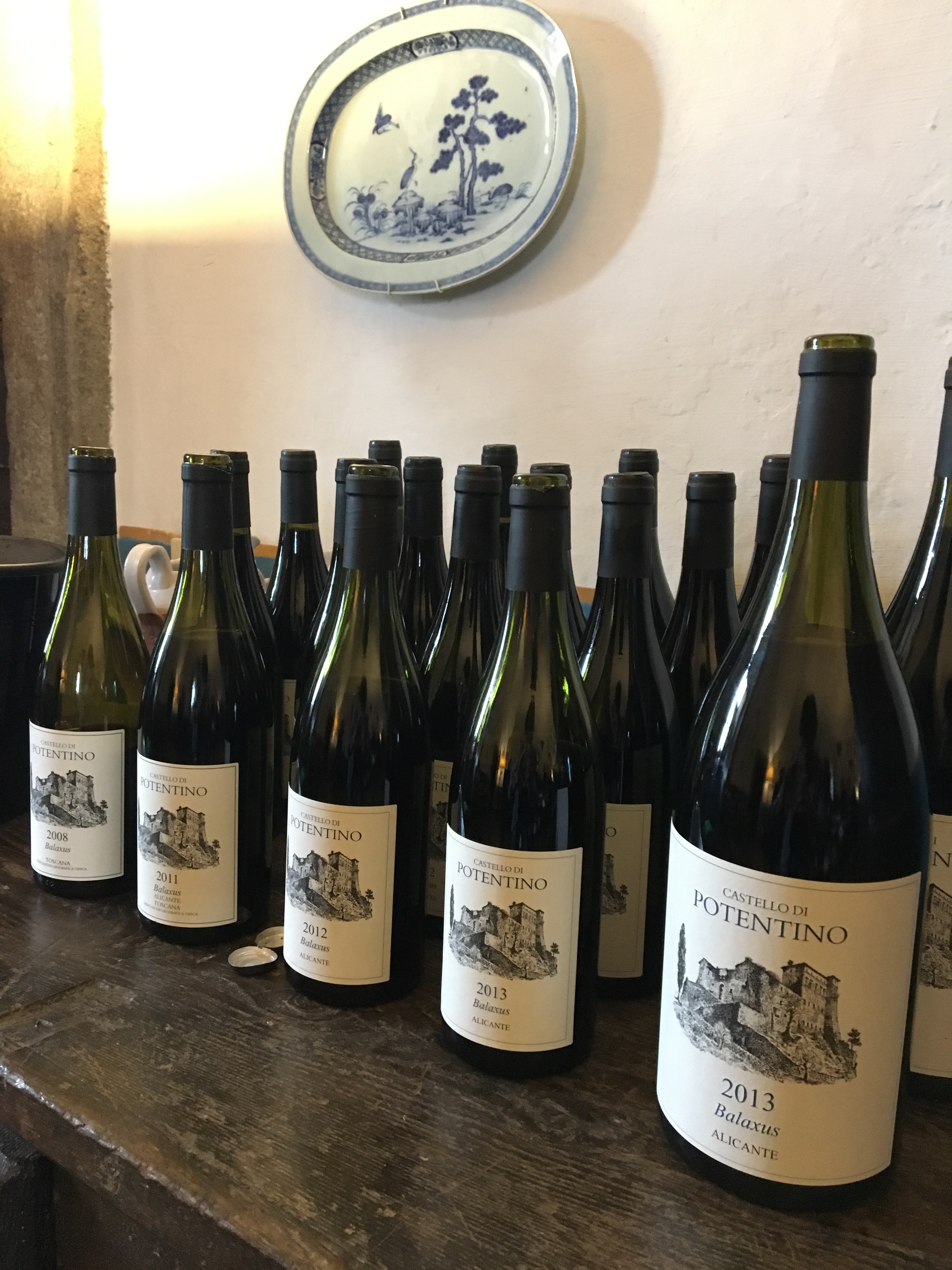
Piropo I.G.T. TOSCANA Pinot Nero
Grape Variety: Pinot Noir
Fermentation: In 50 Hl barrels of French Oak for 18 days
Maturation: In 50 Hl barrels of French Oak for at least 24 months
Refinement: In bottle for a minimum of 9 months before being placed on the market
Organoleptic Characteristics
Colour: Ruby red with garnet tones
Nose: Elegant, spiced with delicate fruit in young and pleasant bouquet
Palate: Dry and well balanced, rich fruit, consistent, well structured and harmonious with pleasant background tannins
Serve at: 18 degrees Celsius
Best accompanied by: Pasta with meat sauces; delicate red meats (veal, pork etc.); marinated and grilled white meats and wild fowl; salt cod and stockfish.
PIROPO is the pyrope, a rare type of garnet which has a purple tonality and was used as a poetic metaphor for wine from Tuscany by Renaissance writers.

Jaspidem I.G.T. Toscana Rosato
Grape Variety: Sangiovese
Fermentation: In stainless steel vats 20hl. with temperature control
Maturation: 5 months in stainless steel 20hl
Refinement: In bottle for a minimum of 1 month before being placed on the market
Organoleptic Characteristics
Colour: New copper, melon and raspberry pink tonalities
Nose: Red currant, red apple through to medlar
Palate: Wild strawberry, followed by notes of ‘giuggiola’ with a salted caramel, almost marine finish. There is fresh acidity, precise fruity tanin and a good length with a pleasantly dry conclusion.
Serve at: 10-12 degrees Celsius
Best accompanied by: Cicchetti and appetitivi, Parma ham. Salads – Nicoise in particular. Grilled chicken, pork,or fish, Crustaceans – scampi, crayfish, lobster, fish soups, raw sea urchins. Spicy Oriental/Middle Eastern Food.
Jaspidem is the Latin term for the Jasper stone. Its colour ranges from a bright green to red or sandy pink. It is one of the oldest known gemstones and considered to symbolise the earth, as it is grounding and nurturing.
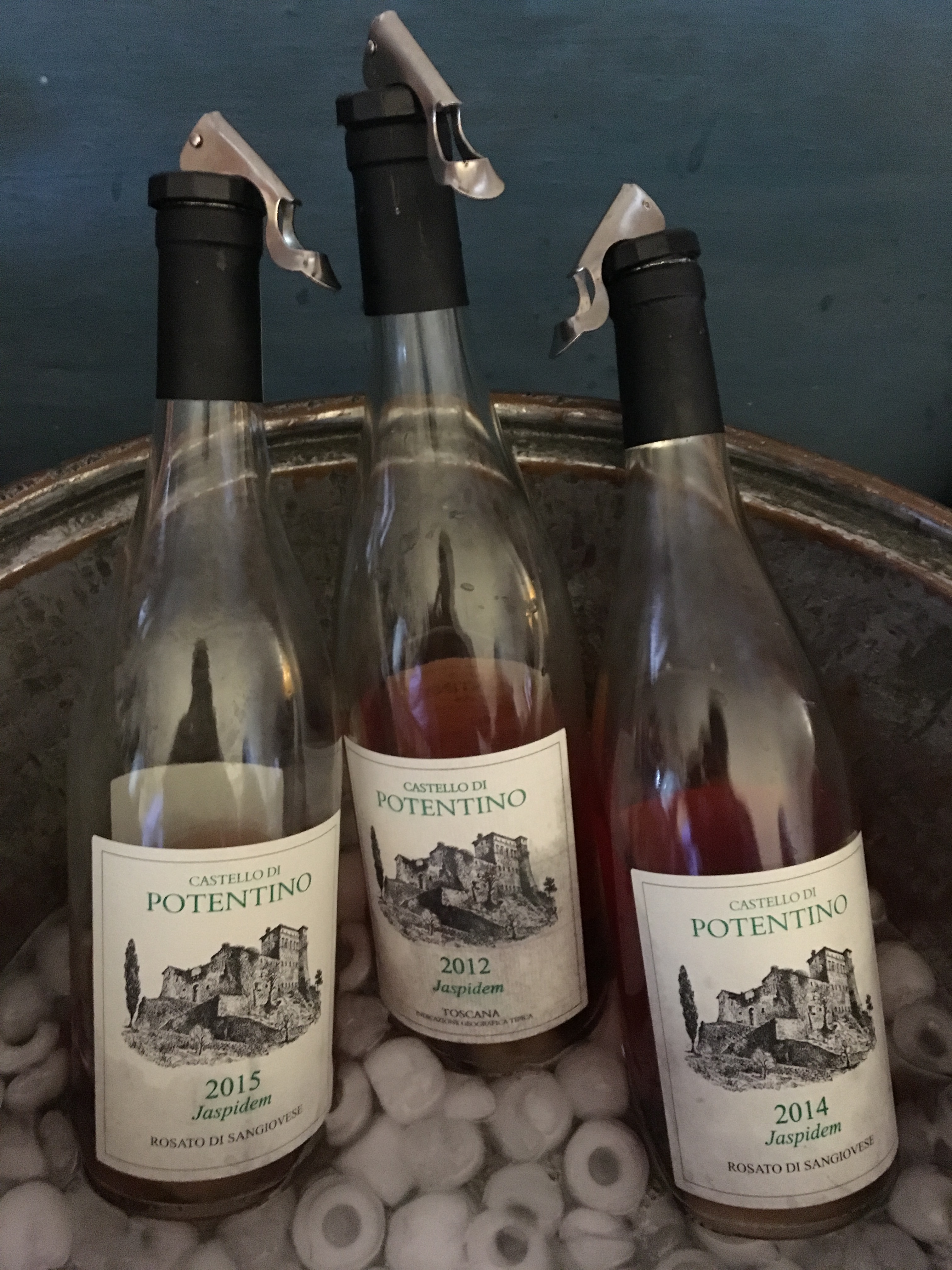
The Winemakers Release I.G.T. Toscana Rosso
Grape Variety: Sangiovese
Fermentation: In 50 Hl barrels of French Oak for approximately 14 days
Maturation: In 50 Hl barrels of French Oak for at least 24 months
Refinement: In bottle for at least 3 years before being placed on the market.
Organoleptic Characteristics
Colour: Delicate translucent ruby
Nose: Intensely floral, with violet and rose notes, sage, savoury and wild penny mint.
Palate: Dry, complex and extremely sublimated, with fine web-like acidity and subtle but resonant tannins.
Serve at: 18-20 degrees Celsius
Best accompanied by: Beef stews or steak, venison, wild boar.
The Winemaker’s Release 2010 Vintage
This wine is specially aged in bottle in the Potentino Cellars until Charlotte, the Winemaker, decides it has reached the right moment of evolution and is ready for proper aging. The wine is a celebration of the mysterious processes that occur within the bottle after the barrel.
Data visita / Visit date 18/02/2018
Castello di Potentino

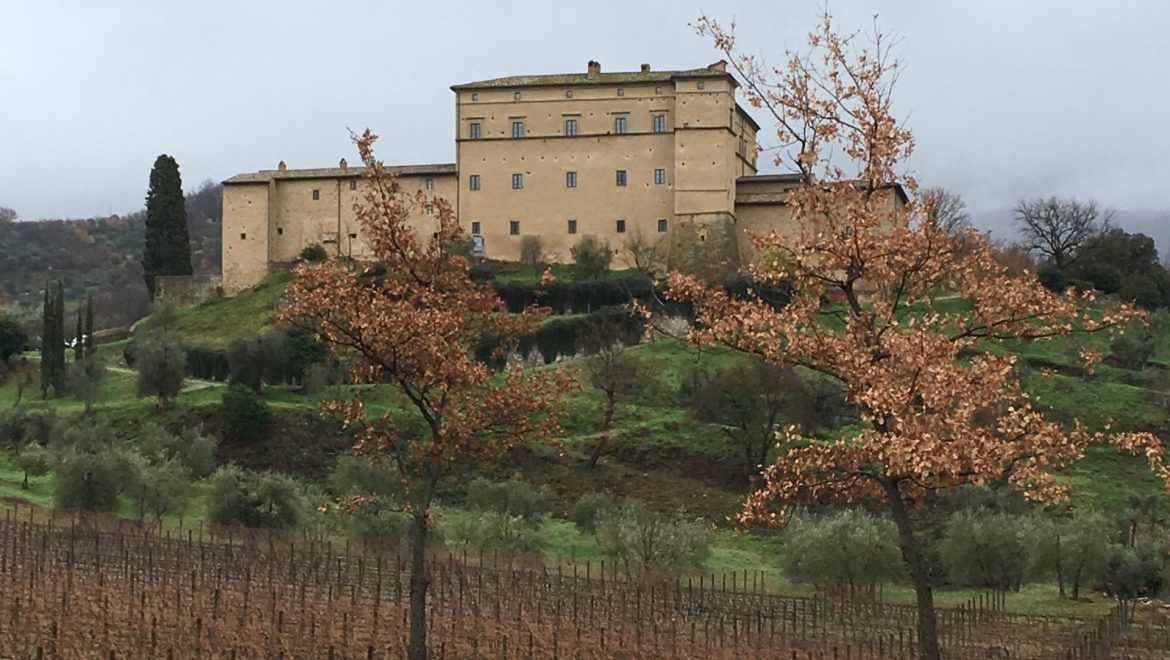


Aggiungi commento